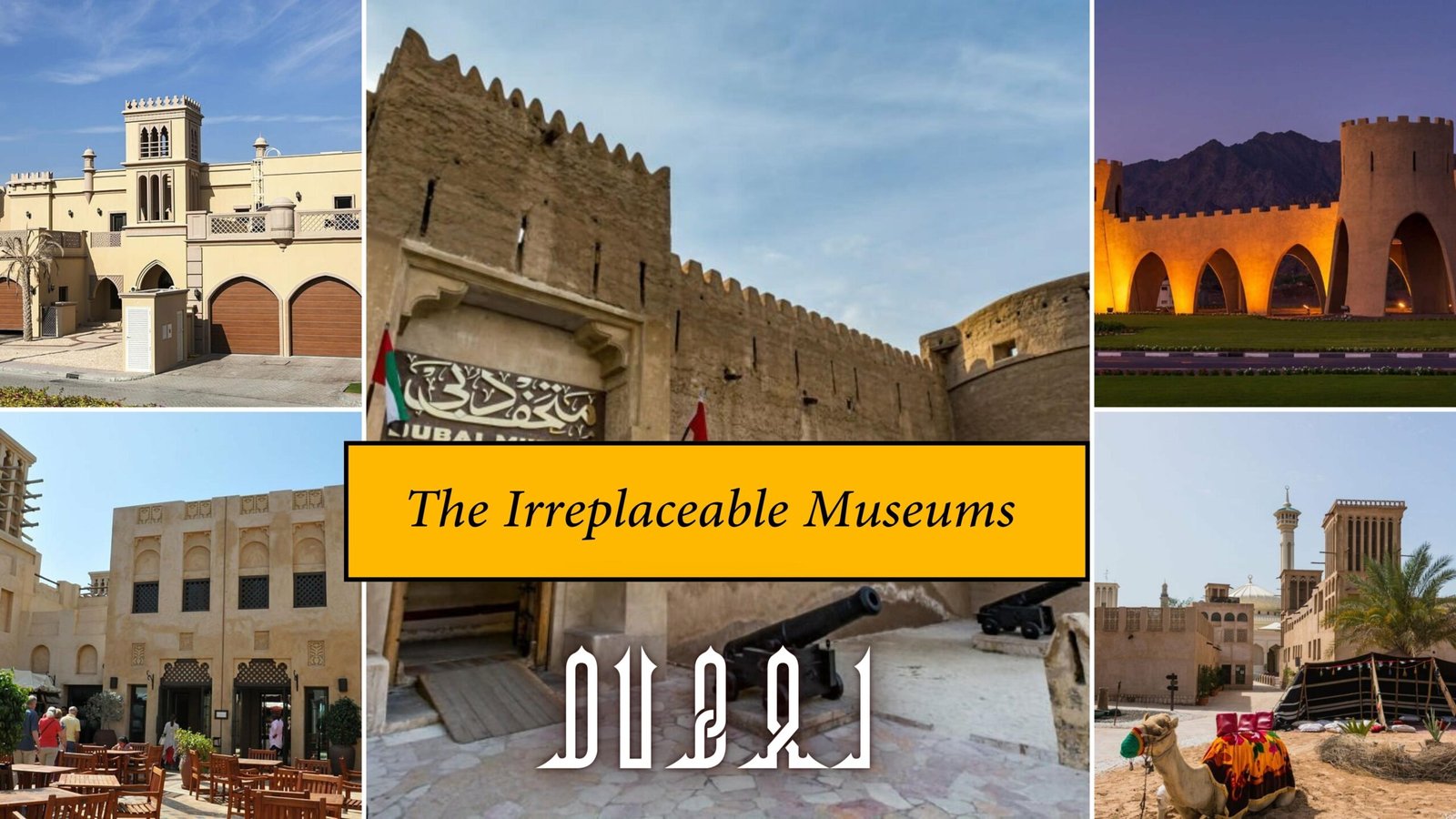Dubai is a magnificent place where you get in touch with aesthetics, adventure, and all the places that you ever dream of. The museums in Dubai are remarkable to the point that you understand what niche it has to offer.
Table of Contents
Dubai Museum

This is situated in the Al-Fahidi Fort, built in 1787, and is said to be the oldest building in the entire Emirates is one of the amazing museums. The ruler of Dubai renovated in 1995 after he got the museum back in 1971. This museum is known to be the value for historical events and one of the best architecture.
Various galleries in the complex display the general culture of the land mainly emphasizing the 1800s.
Emirati musical instruments, a plethora of artifacts exchanged from African and Asian countries, and the 3,000-4,000-year-old graves at the Al Qusais archaeological site will baffle you with its past. While the museum’s main aim is to present the traditional way of life in the Emirate of Dubai, it also showcases fascinating old maps of the Emirates and Dubai explaining the giant expansion of the region after the oil boom.
Etihad Museum of Dubai

Situated on Jumeirah Road, the Etihad Museum is a historical place that consists of everything old and new. Also called the Union House, it serves as a place that recites the story of the birth of the UAE. Managed by the Dubai Culture and Arts Authority, this museum collects, preserves, and exhibits the heritage and traditions of the city and the country. It has a total of eight pavilions that depict a different story of the UAE.
Dubai Coffee Museum

Dubai’s Coffee Museum is a coffee lover’s paradise tucked away in the Al Fahidi Heritage Hub neighborhood in Bur Dubai. The eccentric museum brings coffee lovers and the coffee culture together under one roof for the love of the cup of brewed Joe (Coffee). The robust home of the Coffee Museum showcases the coffee bean journey from around the world, and how it was discovered back in time. The visitors are often greeted with a warm cup of Java and popcorn when they enter the museum, as a courtesy to the Arab culture of hospitality.
At the Dubai Coffee Museum, one can absorb some deep-rooted lintels on the importance of coffee in different cultures, its preparations like roasting and grinding, the apparatuses used through time, and the different kinds of these rusted beans found around the world. It is the first-ever coffee museum concept in the Middle East brought by a coffee enthusiast, Mr. Khalid Al Mulla, who is also the owner of the renowned coffee company, “Eastern Men and Company”. The small, quaint museum harboring a coffee museum, a unique gift shop, and a cozy café is known by the name of Villa 44, situated in the Bastakiya region of Bur Dubai.
Saeed Al Maktoum’s house

Al Maktoum House is a historic building located in the Al Shindagha Area of the city.
Former residence of Dubai’s then-ruler Saeed Bin Maktoum Al Maktoum, the house built
in 1896 is now a museum. Visitors can enjoy and learn about the city and the royal
family’s culture and lifestyle.
It is now a famous tourist spot that impresses residents and visitors with its simple
yet vast stature, open areas and courtyards, and cooling wind towers. You can find a
lot of old pictures, documents, stamps and coins, jewelry, and decorative items in
this ancient museum.
Camel Museum

Established in the 1940s in the Al Shindagha region, the Camel Museum is built on a property owned by the late Sheikh Rashid bin Saeed Al Maktoum. Also referred to as “Camel-Riding House” or “Beit Al Rekab”, the museum narrates the distinct relationship between Camels and the people of Dubai. The museum is permanently closed. Dubai is known for outstanding places and the places are extravagant as well. This museum is the most visited one because of the charm it holds.
OLi Oli Museum

OliOli located on Sheikh Zayed Road, is an interactive play area for children. While the galleries create a fun, joyful, and safe atmosphere, they also create a learning space where children can explore topics like Science, Technology, Engineering, Arts, and Mathematics (STEAM).
With eight galleries holding more than 40 exhibits and frequent workshops, OliOli has managed to capture the hearts of both parents and children alike in just a few short months. This interactive museum provided a hands-on experience that not many other places could afford, and that’s what made it stand out from the other edutainment centers in Dubai.
Hatta Heritage Village

Hatta Heritage Village is a mountain village that has been reconstructed and extensively renovated to give visitors an insight into what ancient Emirati villages looked like. Amidst the Al Hajar Mountains in Hatta, the village is almost 3000 years old, but in a perfectly revamped condition. The rural landscape is flecked with a cluster of farms chiseled by a freshwater canal, quaint shops selling customary heritage collections, and an archaeological cemetery.
Matching the originality of a mountain village, every structure within the Hatta Heritage Village is built with materials such as mud, fronds, palm tree trunks, stone, and reed which were used to make buildings and structures in most of the Emirati villages. The Hatta Heritage Village is located inside the historic fort that has a reception room locally known as Majlis, a conventional house with a courtyard and various palm-leaf structures. The traditional houses, fortresses, and castles exhibit antiques and artifacts on local music, weaponry, palm-tree products, weaving, traditional dress, handicrafts, and old village society.
Shindagha Museum


